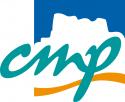UB11 Session 11
Date: Thursday 22 March 2018
Time: 14:30 - 16:30
Location / Room: Booth 1, Exhibition Area
| Label | Presentation Title Authors |
|---|---|
| UB11.1 | ARCHON: AN ARCHITECTURE-OPEN RESOURCE-DRIVEN CROSS-LAYER MODELLING FRAMEWORK Authors: Fei Xia1, Ashur Rafiev1, Mohammed Al-Hayanni2, Alexei Iliasov1, Rishad Shafik1, Alexander Romanovsky1 and Alex Yakovlev1 1Newcastle University, GB; 2Newcastle University, UK and University of Technology and HCED, IQ Abstract This demonstration showcases a modelling method for large complex computing systems focusing on many-core types and concentrating on the crosslayer aspects. The resource-driven models aim to help system designers reason about, analyse, and ultimately design such systems across all conventional computing and communication layers, from application, operating system, down to the finest hardware details. The framework and tool support the notion of selective abstraction and are suitable for studying such non-functional properties such as performance, reliability and energy consumption. More information ... |
| UB11.3 | OISC MULTICORE STENCIL PROCESSOR: ONE INSTRUCTION-SET COMPUTER-BASED MULTICORE PROCESSOR FOR STENCIL COMPUTING Authors: Kaoru Saso, Jing Yuan Zhao and Yuko Hara-Azumi, School of Engineering, Tokyo Institute of Technology, JP Abstract Subtract and Branch on NEGative with 4 operands (SUBNEG4) is one of One Instruction-Set Computers that execute only one type of instruction. Thanks to its simplicity, SUBNEG4 has only 1/20x circuit area and 1/10x power consumption against MIPS processor. As SUBNEG4 is Turing-complete, it is suitable for parallel computing by multiple cores, while keeping its low-power feature. Our on-going project is seeking for effective use and deployment of SUBNEG4 cores on embedded systems. Our booth will demonstrate the significant speed-up by a SUBNEG4-based many-core processor against a conventional processor, for stencil computing. Our 64-core processor efficiently handles 2D von-Neumann neighborhood stencils, e.g., wave simulation by Verlet integration and 2D Jacobi iteration, to compute 64 points simultaneously. We show that small many-core processors can be realized even with such large number of cores while achieving good speed-up for heaving computation. More information ... |
| UB11.6 | SPANNER: SELF-REPAIRING SPIKING NEURAL NETWORK CONTROLLER FOR AN AUTONOMOUS ROBOT Authors: Alan Millard1, Anju Johnson1, James Hilder1, David Halliday1, Andy Tyrrell1, Jon Timmis1, Junxiu Liu2, Shvan Karim2, Jim Harkin2 and Liam McDaid2 1University of York, GB; 2Ulster University, GB Abstract The human brain is remarkably resilient, and is able to self-repair following injury or a stroke. In contrast, electronic systems typically exhibit limited self-repair capabilities, and cannot recover from faults. We demonstrate a bio-inspired approach to self-repair that allows an autonomous robot to recover from faults in its artificial 'brain'. Astrocytes are support cells in the human brain that interact with neurons to regulate synaptic activity. We have modelled this interaction to create a spiking neural network that can self-repair when synapses between neurons are damaged, by strengthening redundant pathways. We demonstrate a robot platform controlled by a self-repairing spiking neural network that is implemented on an FPGA. We demonstrate that injecting faults into the synapses of the network initially causes the robot to behave erratically, but that the neural controller is able to automatically repair itself, thus allowing the robot to resume normal function. More information ... |
| UB11.7 | USING FORMAL METHODS FOR AUTOMATIC PLATFORM-INDEPENDENT CODE GENERATION OF RUN-TIME MANAGEMENT Authors: Mohammadsadegh Dalvandi, Michael Butler and Asieh Salehi Fathabadi, University of Southampton, GB Abstract Run-Time Management (RTM) systems are used in embedded systems to dynamically adapt hardware performance to minimise energy consumption. In this demonstration, we present a framework for automatic generation of RTM implementations from platform-independent formal models. The methodology in designing the RTM systems uses a high-level mathematical language, Event-B, which can describe systems at different abstraction levels. A code generation tool is used to translate platform-independent Event-B RTM models to platform-specific implementations in C. Formal verification is used to ensure correctness of the Event-B models. The portability offered by our methodology is demonstrated by modelling a Reinforcement Learning (RL) based RTM and generating implementations for two different platforms that all achieve energy savings on the respective platforms. The generated RTM code has been integrated with the PRiME framework, a cross-layer framework for embedded power management. More information ... |
| UB11.9 | ABSYNTH: A COMPREHENSIVE APPROACH TO FRONT TO BACK ANALOG BLOCK DESIGN AUTOMATION Authors: Abhaya Chandra Kammara S.1, Sidney Pontes-Filho2 and Andreas König2 1ISE, TU Kaiserslautern, DE; 2University of Kaiserslautern, DE Abstract ABSYNTH was first presented in CEBIT 2014 where complete, practical circuit sizing approaches have been shown using meta-heuristics on trusted simulators. This tool was then proven by its use in design of several cells in a research project. Here, we present the extension to our nested optimization approach that creates a symmetric and well matched layout in every step for every instance in the population of the swarm, that is extracted in our flow to provide feedback to the cost function impacting on the population update for more viable and robust circuits. The layout optimization presented in this DEMO works with Cadence Layout design tools. Our initial focus is, motivated by Industry 4.0, IoT, on cells for signal conditioning electronics with reconfigurability and Self-X features.[1] Abhaya C. Kammara, L.Palanichamy, and A. König, "Multi-Objective optimization and visualization for analog automation", Complex. Intell. Syst, Springer, DOI 10.1007/s40747-016-0027-3, 2016 More information ... |
| 16:30 | End of session |











